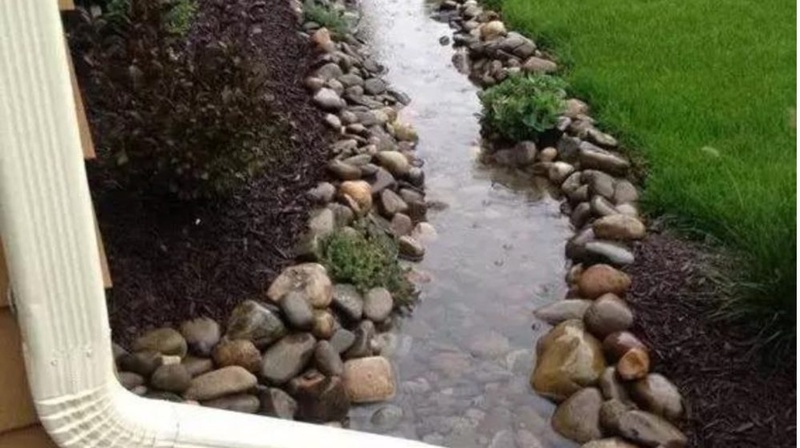
Embrace the Rain: How Rainscaping Adds Interest to Your Florida Garden
Rainscaping creates functional, interesting, and beautiful spaces in a landscape while protecting local waterways. Rainscaped features range from rock-bordered channels to small, shallow pools and other creative forms that capture, use, and display water.
Florida’s rainy season brings more than showers—it offers a chance to do something different in your garden through something called “rainscaping.”
Rainscaping comprises sustainable landscaping features that manage stormwater runoff, convert it into garden assets, and safeguard local water bodies from pollution. In this blog, we look at the principles of rainscaping and how a rain garden can become a functional and enchanting part of your landscape.
The Essence of Rainscaping
Envision a garden where each raindrop is directed to nourish and sustain, where plants thrive on natural irrigation, and where excess water filters through arrays of native flora and permeable soils. This is the heart of rain-scaping—thoughtful designs that create harmony between nature and your home’s landscape.
Creating Your Rain Garden
Rainscaping can transform your garden into a collection of thriving, beautiful ecosystems. When considering the design of your rain garden, it’s not just about aesthetic appeal; it’s about functional spaces that blend well with the local environment.
Size and Depth
The scale of your rain garden needs to be considered. It should be large enough to capture runoff from rain events yet proportionate to your property. A common rule of thumb is that a rain garden should be approximately 20% of the size of the area draining into it. Depth is also essential, with most rain gardens being 4 to 8 inches deep, which allows for efficient water absorption without creating standing water that persists for more than a day.
Infiltration Rate
This is the speed at which water permeates the soil. Conduct a simple infiltration test by digging a hole and timing how long it takes for water to soak in. This will give you an idea of your soil’s drainage capability. Sandy soils drain quickly, while clay soils may require amendments to improve permeability. Proper infiltration ensures that your garden absorbs rainwater efficiently, reducing runoff and the risk of flooding.
Drainage Area
Evaluate the landscape around your property to determine where water naturally flows. The drainage area is all the surfaces that will direct water to your rain garden. It could be a section of your roof, a driveway, or a slope in your yard. The size of this area will inform how large your rain garden should be to handle the water volume.
Impervious Surfaces
These are surfaces that water can’t penetrate, such as concrete or asphalt. They significantly increase the volume of runoff as they prevent water from soaking into the ground. In your design, consider how you can either minimize these surfaces or shape your garden to capture runoff from them effectively.
Slope of the Site
The slope or gradient of your land affects how water flows and how it can be captured. A flatter site will retain water longer, while a steep slope will require careful planning to slow and direct runoff. You may need to create terraces or use plants with deep root systems to stabilize the soil and manage the water flow.
Rainfall Patterns
Familiarize yourself with the local climate—how much rain do you get, and how intense can it be? Design your garden to accommodate the average rainfall but also to withstand the occasional downpour. This ensures that your rain garden is an effective tool for water management throughout the year.
By carefully considering each of these aspects, you can create a rain garden that effectively manages water flow and becomes a sanctuary for local flora and fauna. This act of stewardship enhances the natural beauty of your property and contributes to the broader environment.
The Benefits of a Rain Garden
A rain garden is not only aesthetically pleasing but also acts as a natural buffer zone that captures rainwater runoff, diverting it from your home and preventing potential water damage. This eco-friendly oasis can mitigate flooding, reduce erosion, and create a biodiverse environment that supports local ecosystems.
Transforming Rain into a Resource
Rainscaping with a rain garden is an outgrowth of environmentally conscious landscape management. Begin planning your rain garden today, and make every shower a source of life for your garden.